As a Blue Badge Tourist Guide in London, I am very familiar with the story behind the film The Dig. When giving a tour of the British Museum where the result of the famous excavation is displayed, it is usually a real highlight for visitors, both young and old. Let me tell you a little more about this amazing archaeological adventure story.
The Dig, A Historical Novel by John Preston
In 2007, a novel called The Dig by John Preston was published in the United Kingdom. It dramatizes the real events that took place in Suffolk, East England just before the outbreak of the Second World War, events that would lead to the greatest ever archaeological find in Britain. One reviewer of the book wrote enthusiastically: ‘This is a wonderful, evocative book. From his simple tale of dirt, Preston has produced the finest gold.’ Indeed, the book is about exactly that: by excavating a mysterious and ancient mound at Sutton Hoo, the historical layers of soil and dirt would reveal Britain’s only substantially preserved ship burial, including its exceptional grave goods and luxurious items. Interestingly, John Preston was inspired by his own aunt, Peggy Piggott, played by Lily James in the film, who was an archaeologist during the original dig. Apparently, Aunt Peggy found the first gold discovered at Sutton Hoo!
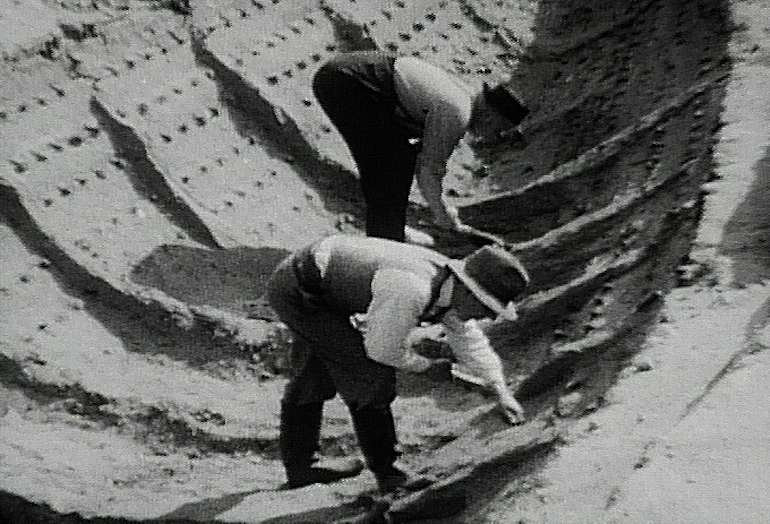 Basil Brown (front) and Lt. Cmdr. J. K. D. Hutchison excavating the 7th-century burial ship at Sutton Hoo in 1939. Photo Credit: © Harold John Phillips via Wikimedia Commons.
Basil Brown (front) and Lt. Cmdr. J. K. D. Hutchison excavating the 7th-century burial ship at Sutton Hoo in 1939. Photo Credit: © Harold John Phillips via Wikimedia Commons.
The Dig Film
Fast forward to January 2021 and the premiere of the film based on the book, directed by the Australian Simon Stone. He admitted that although he had visited Suffolk in his youth, he knew little about the excavation itself. The bulk of the film was shot as near as possible to the archaeological site by the River Deben, not too far from Woodbridge in Suffolk, although they had to prepare fake burial mounds to dig into. Basil Brown, formerly employed by the Ipswich Museum and the man who discovers the ship burial, is played by Ralph Fiennes (of The English Patient fame). Mr Fiennes had no problem adopting a convincing local accent for his role since he was born in Ipswich!
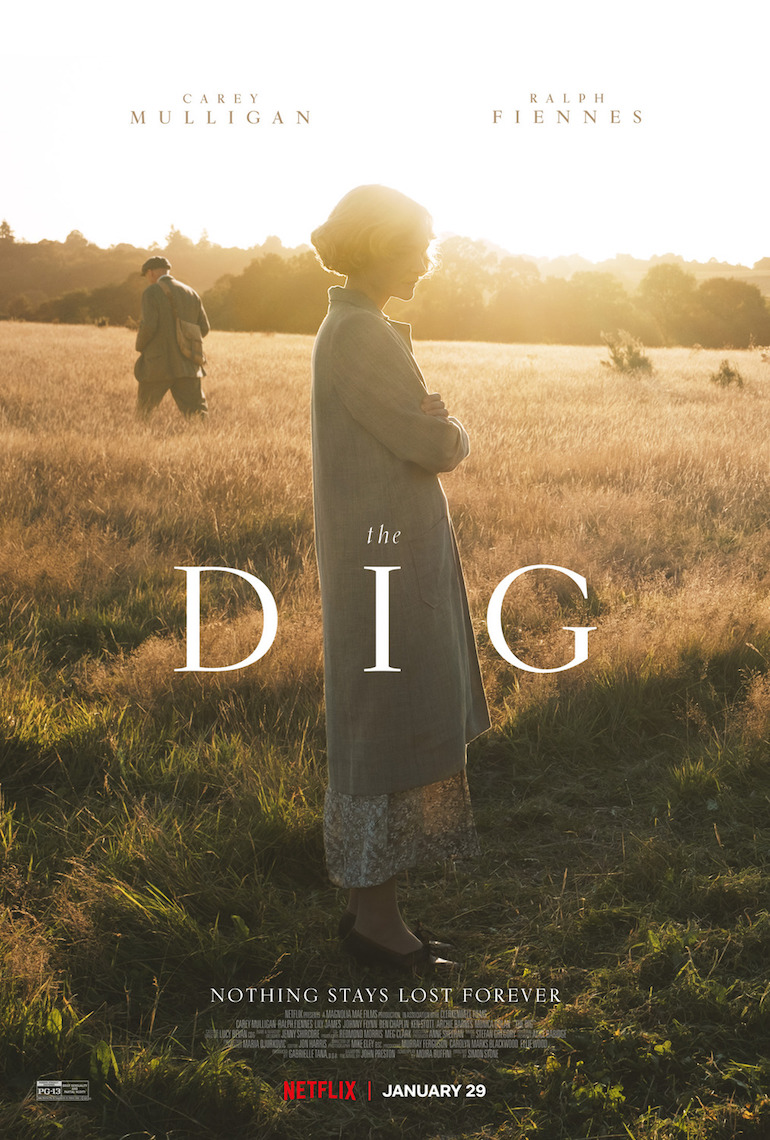 Movie poster for Netflix The Dig film based on book John Preston. Photo Credit: © Netflix.
Movie poster for Netflix The Dig film based on book John Preston. Photo Credit: © Netflix.
Mrs Pretty & Mr Brown
In 1938, the widowed landowner Mrs Edith Pretty, played by Carey Mulligan, made contact with local archaeologist Basil Brown, in order to investigate a series of eighteen intriguing mounds on her estate in Suffolk. Mrs Pretty was a keen spiritualist and may have been encouraged to excavate the mounds as a result of a ghostly vision. A more likely scenario, however, is that her keen amateur interest in archaeology – she had visited Egypt and the Nile Valley – was the main impetus. Basil Brown started work at Sutton Hoo in June 1938. However, it was the following year, just before the British declaration of war on 3 September 1939, that they made the big discovery on the biggest mound, now known as Mound One: iron rivets from the hull of a twenty-seven metre long Anglo-Saxon ship. He went on to discover a royal burial chamber, which included a spectacular helmet, a gold belt buckle, sword and shield, believed to have belonged to King Rædwald, a ruler of the Kingdom of East Anglia in the seventh century. In total they made 263 finds of gold, garnet, silver, bronze, enamel, iron, wood, bone, textile and fur. An inquest established that the treasure belonged to the landowner, Mrs Pretty, but she generously donated everything to the British Museum.
When it became clear that Sutton Hoo was of immense significance, the excavation was taken over by an archaeologist from Cambridge, Charles Phillips. Some have incorrectly assumed that Brown and Phillips did not get on, but they eventually became lifelong friends and colleagues.
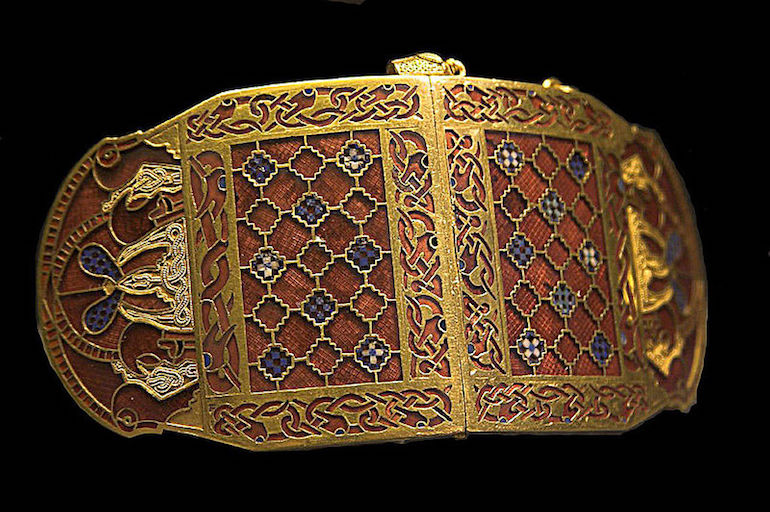 Shoulder clasp (closed) from the Sutton Hoo ship burial. Photo Credit: © Rob Roy via Wikimedia Commons.
Shoulder clasp (closed) from the Sutton Hoo ship burial. Photo Credit: © Rob Roy via Wikimedia Commons.
The Significance of the Excavation
At the time of this burial, the England of today did not yet exist. Instead, there were a number of smaller kingdoms, vying for power. Sutton Hoo was situated within the kingdom of East Anglia, apparently pretty powerful at the time. Indeed, the effort involved in realising this burial, including the feat of dragging the ship up from the river below, was monumental. The finds revealed the kingdom’s extensive trading links, not only with Scandinavia but also with such distant lands as the Byzantine Empire and Egypt. Most importantly, the finds revolutionised our understanding of the 7th century, previously seen as a backward period and part of the ‘Dark Ages’. Several factors of this burial demonstrate that King Raedwald’s Kingdom was quite the opposite.
For many scholars, one very exciting aspect of the Sutton Hoo ship burial is its similarity to what is described in the early mediaeval epic poem, Beowulf. In the poem, dated to between the sixth and tenth centuries, there is a description of a burial of Scyld Scefing, an ancestor of the Danish royal family. He is laid to rest in a boat surrounded by treasures. Although there is almost certainly no link between the events in Beowulf and Sutton Hoo, the same world of traditions and ideas seems to have inspired them.
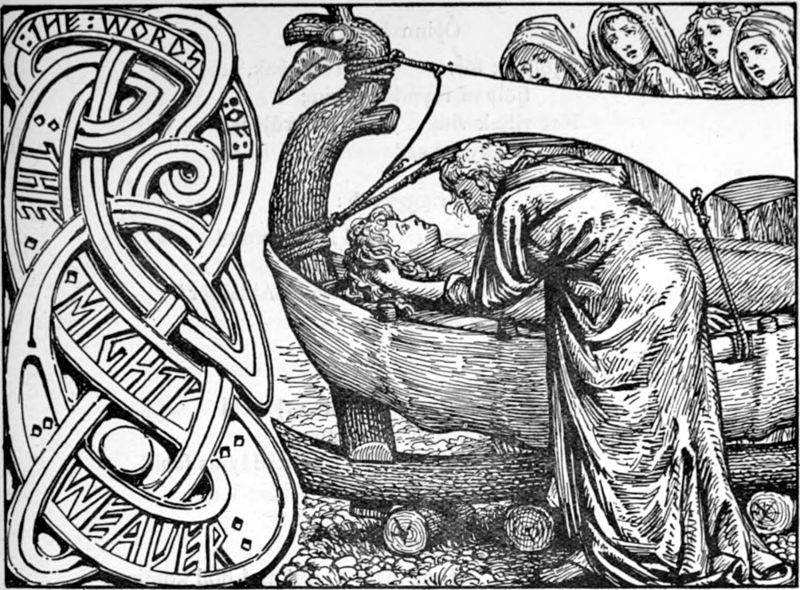 Photo Credit: © The god Odin whispers in the ear of the dead Baldr, lying in the boat, from The Elder Edda; commonly known as Sæmund’s Edda. Photo Credit: © W.G. Collingwood via Wikimedia Commons.
Photo Credit: © The god Odin whispers in the ear of the dead Baldr, lying in the boat, from The Elder Edda; commonly known as Sæmund’s Edda. Photo Credit: © W.G. Collingwood via Wikimedia Commons.
Sutton Hoo Helmet
The star exhibit in the Sutton Hoo display at the British Museum is no doubt the warrior helmet. It is first of all an extraordinary feat of restoration and conservation as it consists of hundreds of fragments that were extremely carefully pieced together. Most helpfully, a replica helmet is displayed nearby to give you a better idea of the extraordinary workmanship and the details of its decoration. Another link to Beowulf and Scandinavia is suggested by the fact that the most closely linked contemporaneous helmets come from Eastern Sweden and similar burials in an area called Uppland. However, the upper shape of the helmet also suggests to scholars a Roman connection. The decoration consists in part of a menagerie of creatures, including a double-headed serpent and boars. In Beowulf, there is a description of helmets emblazoned with boars rendering them impenetrable, a useful characteristic if worn by warriors. Recent research also suggests a connection between the helmet and its wearer with the Norse god Odin (King of Asgard in the Marvel movies!). Why not discover more about Sutton Hoo and ‘The Dig’ in the company of a Blue Badge Tourist Guide who can make the exhibits at the British Museum truly come alive.
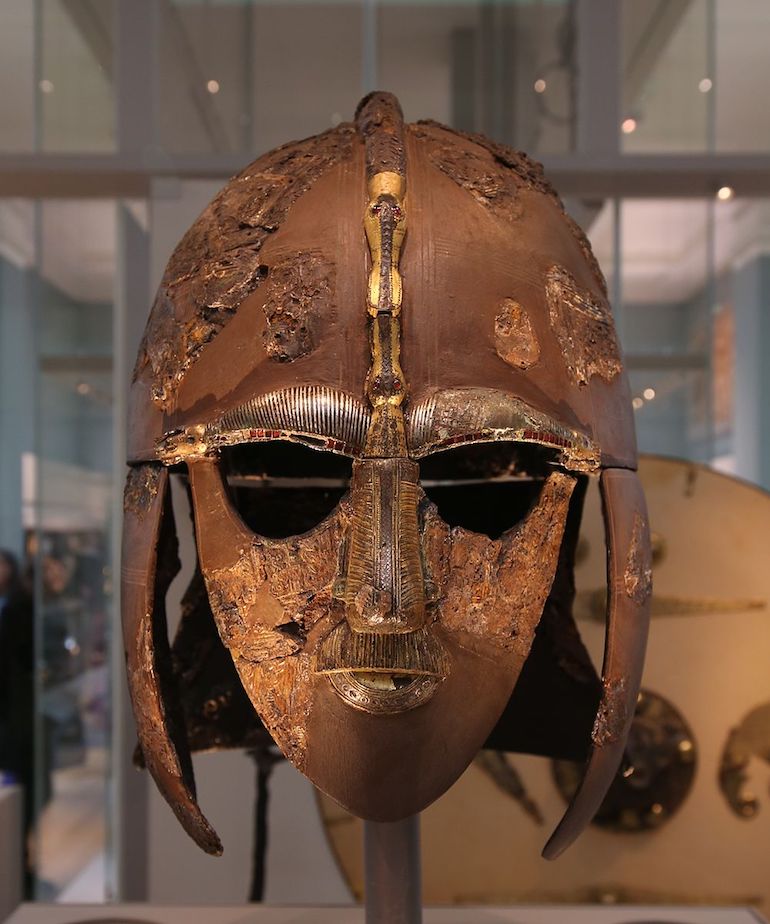 Sutton Hoo helmet at British Museum. Photo Credit: © Geni via Wikimedia Commons.
Sutton Hoo helmet at British Museum. Photo Credit: © Geni via Wikimedia Commons.



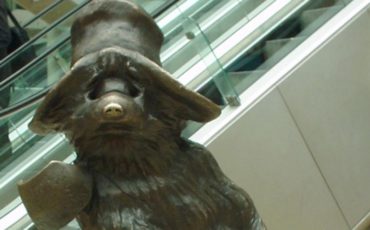


Leave a Reply